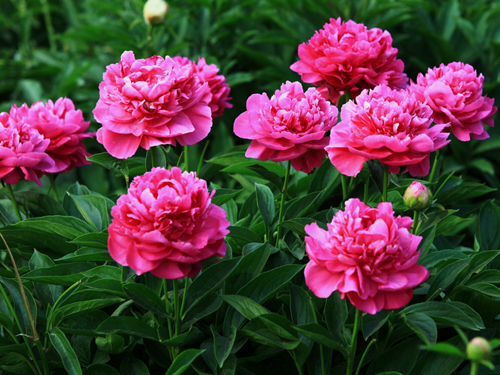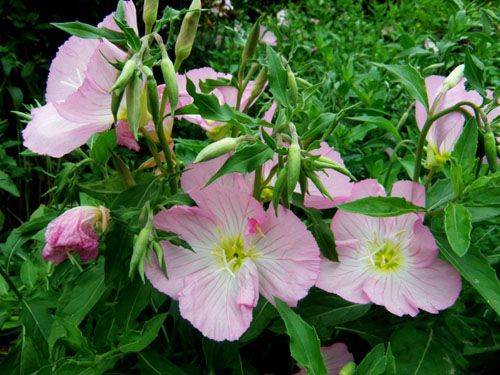The Culture method of Emerald Finch (Sparrow)
Emerald Finch (Swift Grass)
Scientific name: delphinium grandiflorum
Alias: pigeon flower, Baibu grass
Family and genus: Ranunculaceae
Morphological characteristics: perennial herbs, plant height 30cm to 80cm. Stems erect, much branched, stems and petioles retrorse and appressed pilose. Leaves alternate, palmately 3-parted. Racemes terminal, sepals petaloid, blue, spur straight, petals and staminodes blue.
Ecological habits: born on hillsides, grasslands, fixed sand dunes. Like cool, ventilated, sunny dry environment and sandy loam with smooth drainage. Drought-tolerant plants, light-loving plants. Positive, semi-overcast, strong, drought-resistant, cold-resistant, like cold climate, avoid hot. It is cultivated in the southwest.
Florescence: from May to July.
Flower language: quiet, light, justice, freedom.
Garden uses: flower bushes, flower beds, flower borders, cut flowers.
Medicinal value: whole grass and seeds can be used as medicine to treat toothache. The extract of stems and leaves can kill insects.

I. breeding methods of emerald finches
1. Environment: when planting emerald finches, we should choose places with higher topography and plenty of sunshine. The ground is made into a slightly sloping slope during soil preparation to facilitate drainage and prevent stagnant water in the border from adversely affecting its growth when it rains or irrigates. When preparing the soil, it is necessary to dig deeply to make the soil loose and ventilated.
2. Fertilization: topdressing in different phenological periods. It is necessary to apply organic fertilizer and add an appropriate amount of compound fertilizer as base fertilizer before planting; nitrogen fertilizer should be added during the peak period of vegetative growth, when the plant grows rapidly, and timely supplement of nutrition can make the leaves large and thick green; timely supplement of phosphate and potassium fertilizer can increase the number of flowering and prolong the flowering period, so as to improve the ornamental value of the finch.
3. Watering: emerald finches are resistant to drought and avoid waterlogging, and should be watered thoroughly at one time to avoid excessive dryness of the soil, but not stagnant water; watering more appropriately during the flowering period to keep the soil moist, which can prolong the flowering period; avoid watering at noon so as not to cause plant wilting.
4. Management: jade finches should avoid being exposed to the sun. When the summer temperature is high, a small area can be planted in a shade shed, or planted under tall trees. Ploughing and weeding. Weeding and loosening the soil in time to make the jade finches grow healthily and improve their ornamental quality.
Second, the difference between delphinium and emerald.
Swallow grass Ranunculaceae, alias thousand bird grass, radish flower. Herbs born in 2012, plant height 60-100cm. Leaves alternate, palmately lobed, raceme terminal, ovary composed of 1 carpel, protuberant fruit, seed brown, flower growth period from May to July, fruit ripening from July to August, seed life span of 4 years.
Swallow grass pictures
Sparrow genus of Ranunculaceae, alias pigeon flower, large flower delphinium. Perennial perennial herbs, plant height 35-65cm. Leaves alternate, palmately 3-lobed, raceme terminal, ovary composed of 3 carpels, protuberant fruit, seed (planting) seed dark brown, flower growth period from June to September, fruit ripening from August to October, seed (planting) seed life span of 1 year.
Pictures of sparrow flowers
The first difference is that they belong to Ranunculaceae, but the genera and species are different. Sphinx, Swift species; Delphinium, Sparrow species.
The second difference: the plant type of Swift grass is relatively tall, and the flower density is integrated. The emerald finches are relatively short, and the flowers are also small and loose.
The above is the introduction of the breeding methods of delphinus and the difference between delphinium and delphinium. I hope it will be helpful to us to distinguish between delphinium and delphinus, and to cultivate them better at the same time.
- Prev

Culture method of Paeonia lactiflora (Radix Paeoniae Alba and Flos Lonicerae)
Peony (will, no bone flower) scientific name: paeonialactiflora alias: will leave, leave grass, greedy tail spring, Yu Rong, plough food, boneless flower, black draw Yi, red medicine and other families and genera: Ranunculaceae morphological characteristics: underground with thick roots, plant height 60 cm 120 cm. Ye Musheng
- Next

Culture methods of evening primrose (evening primrose, evening primrose)
Evening primrose (evening primrose, evening primrose) scientific name: oenotherabiennis alias: Ampelopsis grossedentata, mountain sesame, wild sesame genus: Saliuraceae morphological characteristics: Artemisia annua herb, 1m high. The plant is shorter in annual cultivation. The whole plant is hairy, the stem is erect, the lower part is much branched.
Related
- Fuxing push coffee new agricultural production and marketing class: lack of small-scale processing plants
- Jujube rice field leisure farm deep ploughing Yilan for five years to create a space for organic food and play
- Nongyu Farm-A trial of organic papaya for brave women with advanced technology
- Four points for attention in the prevention and control of diseases and insect pests of edible fungi
- How to add nutrient solution to Edible Fungi
- Is there any good way to control edible fungus mites?
- Open Inoculation Technology of Edible Fungi
- Is there any clever way to use fertilizer for edible fungus in winter?
- What agents are used to kill the pathogens of edible fungi in the mushroom shed?
- Rapid drying of Edible Fungi

